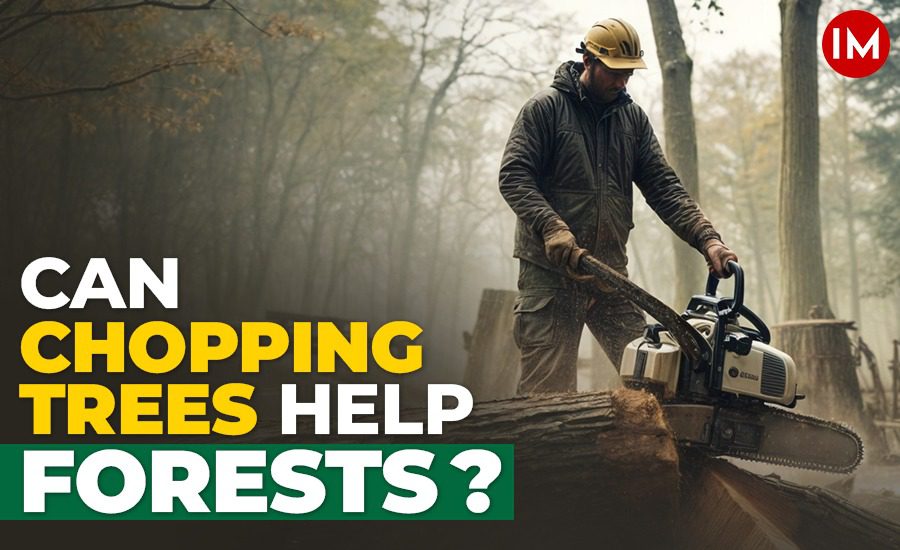Tree logging, often referred to as forestry or timber harvesting, involves cutting down trees for various purposes, including commercial use, fuel, and construction. While it’s often seen as detrimental to the environment, forest officials believe its benefits, both for the environment and the economy, outweigh the losses. In fact, except for some areas in the Western Ghats, most forests in India have been re-laid and restructured at least once.
Principal Chief Conservator of Forests (Delhi), Dr. Suneesh Buxy, in a candid conversation with Indian Masterminds, claimed, “With a growing population, forest area is getting limited. We can’t grow forests on agricultural land. Hence, old trees need to be chopped down to make way for new plants.”
Moreover, as a tree grows older, it starts a process called ‘reverse respiration’. There comes a time when they start emitting more carbon dioxide than oxygen. That is the time when we need to replace them with young plants. “Old trees often develop hollow trunks. We identify such trees for logging,” he said.
CARBON LOCKING
Carbon locking means using timber for human use, mostly furniture or house construction material—in a way, locking the timber for human use. The steel, plastic, or even PVC used in doors, windows, or furniture is produced by burning a huge amount of coal or wood. Besides, it emits an enormous amount of carbon dioxide.
“By using timber instead of steel, iron, or plastic, we are saving many trees as we are locking in the carbon absorbed in the wood for a long time. This is also necessary for sustainable harvesting,” said Dr. Buxy.
Carbon locking is important from international perspectives and sustainable development goals (SDGs). Prime Minister Narendra Modi has clearly underlined the targets for carbon locking. “We have to lock in at least 2.5 to 3 billion metric tons of carbon by way of afforestation in our forests till 2030,” said Dr. Buxy.
UNDERSTORY
Tree logging is also important in the forest to ensure light and water reach the young plants growing under them. This will help hasten their growth as well as that of the forest undergrowth.
Veteran trees have deep roots in the soil and require more nutrients to continue flourishing. This is great for the large trees but prohibits the succession of the habitat for new growth on the land. This is because there are fewer nutrients in the ground, and they are blocking the sun and rain from giving the small trees the essentials required for growth. Logging the mature trees allows the growth of several others, which will increase the value in the long term with higher valued trees.
SUSTAINABLE FOREST MANAGEMENT
Logging can be part of sustainable forest management practices. Properly managed logging operations ensure the health and diversity of forest ecosystems. By selectively harvesting trees and replanting, foresters can maintain a healthy balance of species and ages within a forest, promoting biodiversity.
While the act of cutting down trees releases carbon stored in the wood, managed forests can act as carbon sinks. New trees planted after logging absorb carbon dioxide from the atmosphere as they grow, offsetting the carbon emissions produced during logging. Sustainable logging practices can contribute to overall carbon sequestration efforts.
NEW STUDY
Restoring tropical forests through tree planting and selective plant removal can rapidly increase the speed at which they recover from logging. New research published in the Science journal finds that logged tropical forests in Malaysia that were actively restored increased their ability to absorb carbon 50% faster than logged forests that were left to regenerate naturally.
Without any intervention, a tropical forest will typically take around 60 years to fully recover from a single logging event, the study estimates. With active restoration, this can be shortened to 40 years.
Click on the video link given below for more information, exclusively from the senior IFS office

































